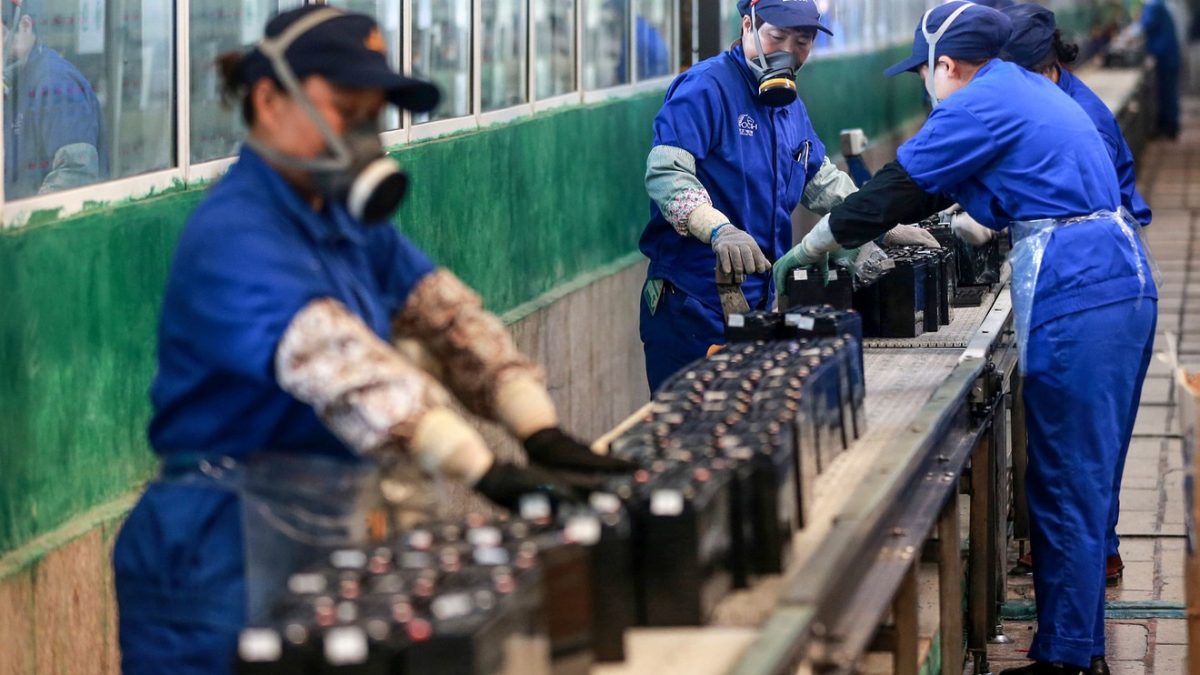Oil prices rebound from a nearly 20-year low

Published: March 31, 2020 at 4:26 p.m. ET, By Chris Matthews and William Watts
U.S. stocks closed out the first quarter on a down note as concerns over the ongoing coronavirus pandemic overshadowed better-than-expected economic data, including a survey of the Chinese manufacturing sector that showed it once again expanding.
What did the major indexes do?
The Dow Jones Industrial Average (US:DJIA) fell 410 points, or 1.8%, at 22,197.16, while the S&P 500 index (US:SPX) lost 42.06 points, or 1.6% to 2,584.59. The Nasdaq Composite index (US:COMP) retreated 74.05 points, or 1% to close at 7,700.10
For the month of March, the Dow lost 13.7%, the S&P 500 sank 12.5% and the Nasdaq fell 10.1%. The Dow notched its worst first quarter on record, according to Dow Jones Market Data, down 23.2%, while the S&P 500 retreated 20% and the Nasdaq 14.2%.
What drove the market?
Concerns remain over the spread of COVID-19 in the U.S. and Europe in particular, with economic activity under lockdown amid a rising tally of infections and a mounting death toll. Spain reported its highest numbers of deaths since the crisis began Tuesday, while coronavirus-related fatalities in the U.S. surged past 3,400, according to Johns Hopkins University.
“Uncertainty around corporate earnings growth in the face of COVID-19, depressed oil prices and slowing the pace of global growth are among reasons to remain cautious in the near term,” Terry Sandven, chief equity strategist at U.S. Bank Wealth Management, said.
Stocks had been trading higher earlier in the session, with analysts pointing to better-than-expected economic data on U.S. consumer confidence and regional U.S. and Chinese manufacturing sectors at the same time as end-of-quarter portfolio rebalancing could be giving a boost to beaten-down U.S. equities.
“Quarter-end behavior is a factor today,” Willie Delwiche, investment strategist at Baird told MarketWatch. “How much of it is actual rebalancing and how much is about thinking about potential rebalancing effects is hard to know.”
“We’re also starting to get a wave of data that perhaps gives some hint of what’s in store, with consumer confidence, Chicago PMI and Chinese manufacturing data coming in better than expected,” he added.
But analysts cautioned that volatility will continue in the weeks ahead. The debate over whether stocks put in a bear-market bottom on March 23 continues, with analysts noting that past downturns have also seen strong bounces from selloffs, followed by retests of the lows.
“Last week’s double-digit gain for markets was a welcome relief rally, though market bottoms are rarely as clean as this one has been. In 2000/01, there were four rallies of greater than 20% before ultimately reaching a bottom, and in the financial crisis, the S&P 500 had a false breakout of 27% before hitting a bottom,” noted Mark Hackett, chief of investment research at Nationwide, in a note.
Early Tuesday, global stocks and U.S. stock-index futures got a lift after data on China’s manufacturing and service sectors showed unexpectedly strong rebounds in March as the country emerged from the lockdown aimed at arresting the spread of COVID-19.
The official Chinese manufacturing purchasing managers index for manufacturing rose to 52.0 in March from a record low of 35.7 in February, the National Bureau of Statistics said Tuesday, topping expectations for a reading of 51.5. The 50 mark separates expansion of activity from contraction.
China’s official service sector purchasing managers index climbed to 52.3 in March from a record-low reading of 29.6 in February.
The PMI readings were “well above expectations and almost too good to be a true for an economy that is still not fully functioning at its pre-crisis optimum level,” said Michael Hewson, chief market analyst at CMC Markets, in a note.
In U.S. data a survey on Chicago-area manufacturing came in at 47.8 in March, down from 49.0 in February, but above expectations of between 35.0 and 42.0, according to Econoday. The Conference Board’s consumer confidence index fell to 120 in March from 130.7 in February, also beating expectations of 115.0, according to a MarketWatch survey of economists.
In other data, the Case-Shiller home price index for January showed U.S. home prices rising 3.9% annually, before the U.S. economy began feeling the economic impact of the coronavirus.
How did other markets trade?
Government bond yields moved mostly lower, with the yield on the 10-year U.S. Treasury note (BX:TMUBMUSD10Y) falling about 8 basis points to 0.7%.
Oil prices rebounded from 19-year lows, with the price of a barrel of West Texas Intermediate crude oil (US:CLK20) for May delivery settling 1.9%, or 45 cents, higher to about $20.48 on the New York Mercantile Exchange. In precious metals, gold US:GCJ20 for June delivery fell $46.60, or 2.8%, to settle at $1,596.60 an ounce on Comex.
The U.S. dollar (US:DXY fell) about 0.1% against a basket of its major trading partners, according to the ICE U.S. Dollar index.
European stocks closed higher, with the Stoxx Europe 600 (XX:SXXP) adding 1.7%.
In Asia overnight, stocks traded mixed. The China CSI 300 (XX:000300) rose 0.3%, Hong Kong’s Hang Seng index HK:HSI rose 1.9% and Japan’s Nikkei 225 (JP:NIK) fell 0.9%.
Source: www.marketwatch.com